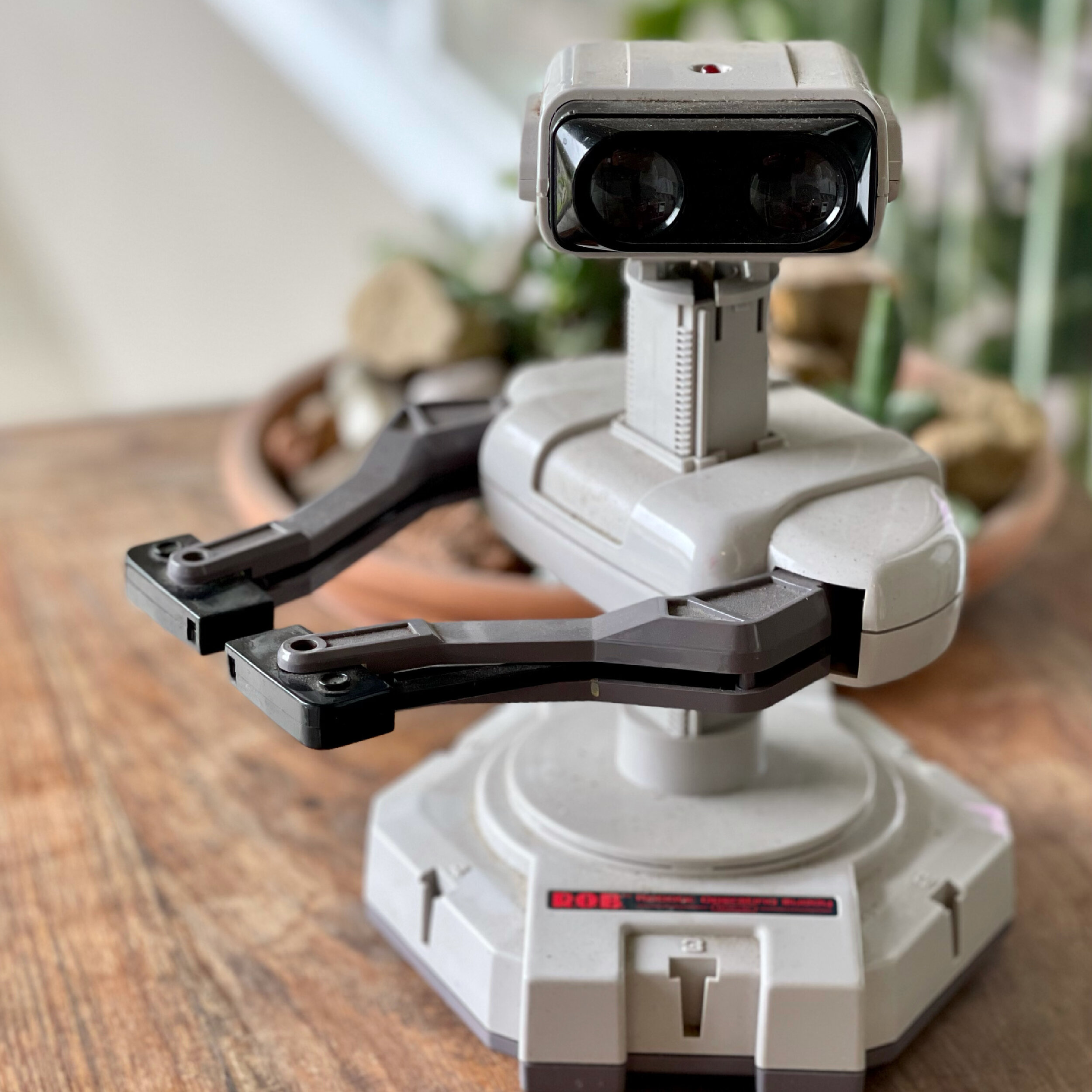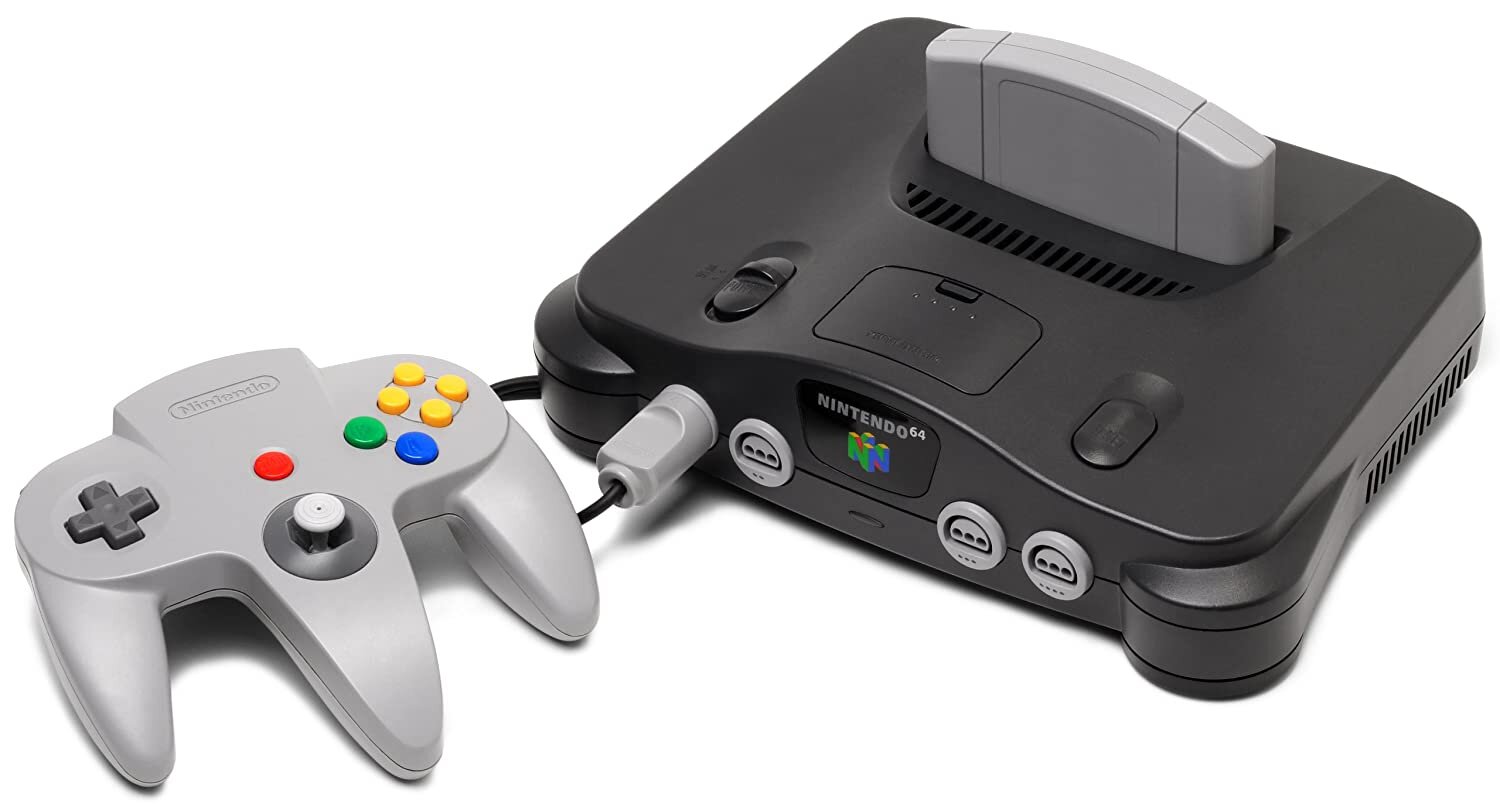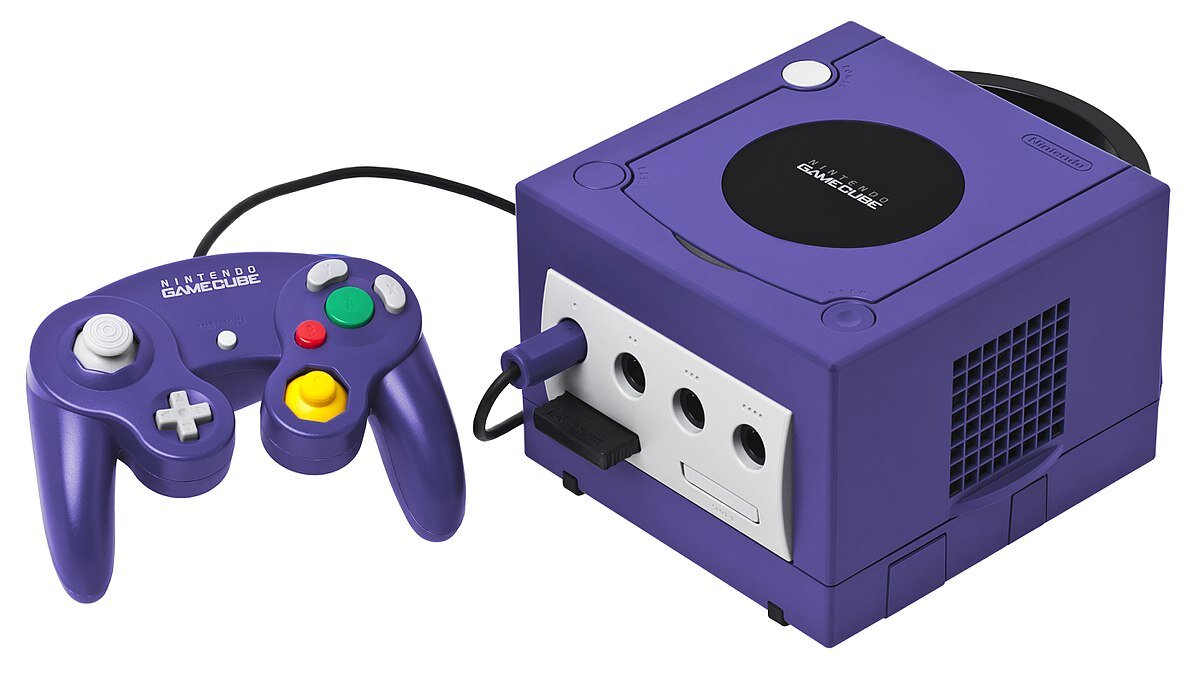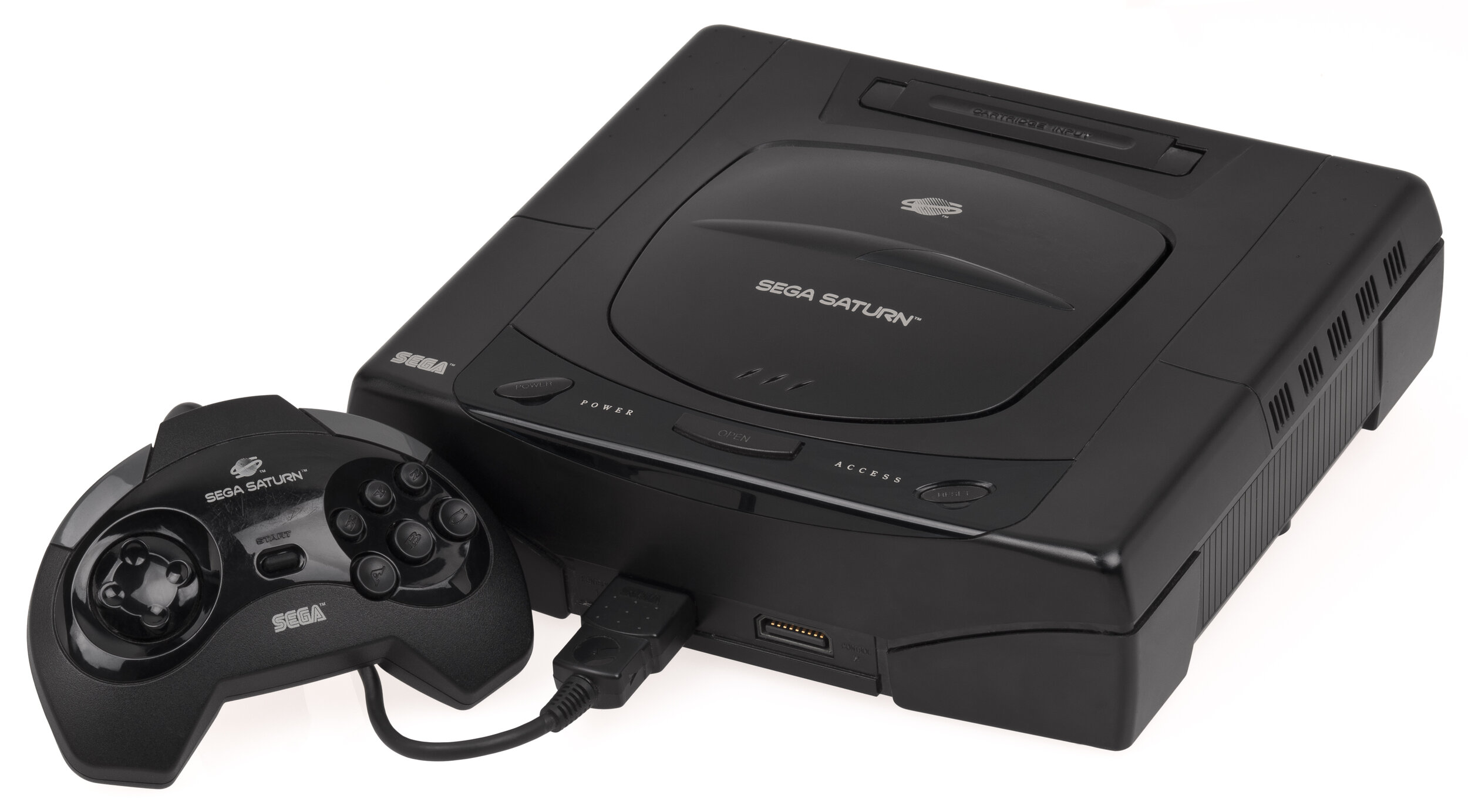Get Your Game On
The Retro Roadshow is excited to let our attendees get hands-on with some of the best classic video game systems ever, all presented on vintage CRT displays
The Atari 2600 wasn't the first home video game console (that honor goes to the Magnavox Odyssey), but the 2600 initially defined (and later, nearly killed) the entire market for video games at home. A runaway success on a nearly unparalleled scale (30,000,000+ units sold) despite being somewhat underwhelming technically, the 2600 was home to some of the best early video games (such as Pitfall, Missile Command and Super Breakout) along with some all-time stinkers (a notoriously-underwhelming port of Pac-Man, the borderline-unplayable E.T. The Extra-Terrestrial, some unauthorized 'adults-only' titles). The 2600 eventually supported over 500(!) commercially-released games, the sheer overwhelming quantity of which (not to mention wildly-varying quality of which) eventually lead to The Great Videogame Crash of 1983, which nearly killed the fledgling industry outright. Despite all this drama, the 2600 remains one of the most fun consoles of all time, and is a popular attraction at Retro Roadshow events.
After the runaway success of their Video Computer System (aka 2600), Atari struggled to recapture that magic. The Atari 7800 ProSystem brought new levels of graphical horsepower and an all-new joystick design, while maintaining backwards compatibility with the vast library of 2600 games. The library of games specifically designed for the 7800 is tiny compared to the 2600's, but many of these games are truly excellent, with impressive visuals and fun gameplay. Despite all this, the 7800 was virtually obliterated by more successful competitors including the Sega Master System and Nintendo Entertainment System, leaving the 7800 a frequently-forgotten member of this generation of consoles.
Arriving with a splash in early 1980, the Mattel Intellivision (a portmanteau of "Intelligent Television") was designed to go head-to-head with Atari's 2600. Featuring comparatively-advanced audio and video capabilities, the Intellivision was also designed with noteworthy expansion capabilities, including add-on modules to enable digitally-synthesized speech via the Intellivoice peripheral, or even expand the system into a full-fledged home computer. While never as commercially successful as its rival the Atari 2600, the Intellivision featured some incredibly fun and innovative games, such as Dracula, Defender, B-17 Bomber and Donkey Kong Jr. The Retro Roadshow is delighted to offer the chance to play on this beloved console.
While it didn't sell nearly as many units as its rival Atari 2600, the ColecoVision set a new standard of arcade-like quality for home consoles. Released in 1982, the ColecoVision's advanced hardware allowed it to produce far more sophisticated graphics and sound than its main competitors, which is immediately apparent when viewing a game like "Donkey Kong" side-by-side on the ColecoVision, Atari 2600 and Intellivision - something which attendees at Retro Roadshow events can experience firsthand.
The Nintendo Entertainment System ("NES") is not only one of the most successful video game consoles of all time, it ranks among the most successful consumer products of all time, period. With nearly 62,000,000 consoles sold and featuring a vast library of all-time-great games, the NES remains instantly recognizable to Retro Roadshow attendees of all ages nearly 40 years after its introduction. We are proud to not only feature a working original NES system, but also a deep library of games both familiar and obscure.
The Nintendo Robotic Operating Buddy (aka "R.O.B.") was a clever accessory released alongside the original Nintendo Entertainment System ("NES"). With the videogame industry reeling from the lingering effects of Atari's decline and the larger "Video Game Crash of 1983," Nintendo cleverly decided to 'imply' that the NES was more than just another Atari-style game console, but also an educational tool and quasi-computer. This desire to seem less videogame-oriented resulted in both the physical design of the NES console (it was modeled after VHS tape players rather than contemporary gaming systems) and the creation of R.O.B., which was used with a couple of simplistic games. While R.O.B. was more valuable as a marketing tool than as a toy, its distinctive looks left a lasting impression, and the Robotic Operating Buddy is now a popular character in the Super Smash Brothers fighting-game franchise
When designing the successor to the wildly-successful Nintendo Entertainment System, Nintendo's design team set out to design something truly "super." With vastly-improved graphics and sound capabilities (including the pseudo-3D "Mode 7" used in games like PilotWings and Mario Kart), the Super Nintendo helped elevate Nintendo and their stable of characters (Mario, Luigi, Link, Zelda, Kirby, Samus, etc.) into global household names. The Retro Roadshow is pleased to regularly provide access to original SNES hardware and a deep library of vintage game cartridges.
With the N64, Nintendo stubbornly stuck to a cartridge-based format just as the rest of the industry was pivoting to CD-ROM as the preferred storage format. Despite this limitation (N64 carts topped out at 64 megabytes of storage, while CD-ROM could hold up to 700 megs), the N64's stunning 3D capabilities (developed in partnership with Silicon Graphics Inc, as seen elsewhere in the Retro Roadshow collection), advanced audio system and innovative controllers ensured that it rapidly built a passionate fan-base around the world. The Retro Roadshow is delighted to give gamers of all ages the chance to play some of the incredible games available on this system.
While the Nintendo GameCube was never as commercially successful as its rivals (the PlayStation 2 and Xbox both outsold it), its adorable design, clever controllers and surprisingly-deep library of games ensured that it remains a popular and beloved console in Nintendo's family. Visitors to the Retro Roadshow can enjoy some time on an original GameCube, the best way to experience classic games like Super Mario Sunshine, Metroid Prime, Super Smash Bros. Melee, Metal Gear Solid: The Twin Snakes, and many more.
Born out of an ill-fated partnership between Sony and Nintendo (who was experimenting with ideas for bringing CD-ROM technology to the Super Nintendo), the failure of the project prompted Sony to forge ahead with creating their own console, and the Sony PlayStation rapidly became Nintendo's biggest rival. Boasting powerful 3D capabilities, high-capacity CD-ROM storage and benefiting from Sony's deep catalog of 1st and 3rd-party content creators, the PlayStation rapidly became an all-time great home console. Eventually offering a staggering 7,918 game titles globally, the PlayStation (later dubbed PS1) is closely associated with game franchises which are still thriving today - Final Fantasy, Gran Turismo, Madden Football, Tomb Raider, Tekken, Metal Gear Solid and many, many more. The PS1 is frequently one of the most popular attractions at Retro Roadshow events.
Building upon the runaway success of the original PlayStation, the "PS2" brought unparalleled technical power to the home console market. A 128-bit CPU, DVD-ROM drive, internal expansion options and network capabilities all contributed to the sense that the PS2 was the ultimate home gaming system, and this was further supported by an incredible catalog of fantastic games. Released at the dawn of the "HDTV" era, the PS2 looks best when viewed on a CRT television, and the Retro Roadshow is the best place to get hands-on with this incredibly fun system.
Sega's Master System is often overshadowed by the vastly more successful Nintendo Entertainment System, but it holds a unique charm all its own. Capable of playing games from both traditional cartridges and also from slim credit-card-shaped ROM cards, the Master System's unique looks and library of quirky games and entertaining arcade ports have made it a beloved favorite for generations of gamers. While it was initially released in North America in 1986 to a modest level of success, a series of geopolitical events resulted in it gaining a massive fan base in Brazil, where it continues to be produced today - making it the longest-produced video game console in history.
Marketed as the more mature, more "extreme" alternative to family-friendly Nintendo, the Sega Genesis was an innovative and powerful home console. Buoyed by the soaring popularity of Sonic The Hedgehog and also offering a range of titles not available elsewhere, the Sega used the Genesis to target older gamers who craved boundary-pushing content - this was certainly reflected in the widely-deployed slogan "Sega Does What Nintendon't!"
Hoping to compete with the first wave of CD-ROM based home consoles, Sega put all its marketing prowess behind the Sega Saturn. With an incredibly-powerful (and in hindsight, overly-complicated) eight-CPU architecture, the Saturn was extremely well suited to pumping out high-definition 2D visuals... at the exact moment the entire gaming industry was rapidly pivoting to 3D graphics. High initial prices, the increasingly-glaring lack of a blockbuster "Sonic The Hedgehog" title, extreme technical difficulties for game developers and fierce competition from Sony and Nintendo ultimately resulted in the Saturn being withdrawn from the market. Nevertheless, the Saturn is home to some truly stunning games which can't be played anywhere else, and visitors to the Retro Roadshow can enjoy them in person.
Stinging from the failure of the Saturn console, Sega set out to design a gaming system built around familiar, inexpensive hardware and supported by an underlying software-development toolset provided by Microsoft. The Dreamcast enjoyed a successful U.S. launch backed by a large marketing campaign, but interest in the system steadily declined as Sony built hype for the upcoming PlayStation 2. Regardless, during its 3-year lifespan, the Dreamcast offered gamers an incredible range of unique experiences, including online multiplayer (a novel concept in the late 90's), a memory card which also functioned as a tiny keychain-sized gaming system, robust support for unusual controllers (digital maracas, a fishing controller, various light-guns, a mouse/keyboard combo, etc.). The Dreamcast library contains many games considered innovative, including Crazy Taxi, Jet Set Radio, Phantasy Star Online, and Shenmue, and visitors to the Retro Roadshow can experience the system firsthand.
One of the first items ever added to the Retro Roadshow collection, the GCE Vectrex is a true oddity amongst home video game consoles. Somewhat resembling a first-generation Apple Macintosh computer, the Vectrex is a self-contained unit, with the most immediately-recognizable element being the built-in 9" CRT. Nearly every video game system in the past 40+ years has been built around "pixel graphics" - individual dots which combine to form an image. The Vectrex display is something else entirely: a "vector graphics" system in which there are no pixels whatsoever, and instead, all images are drawn as rapidly-scaling lines. This type of display was occasionally used for arcade video game systems (games like Tempest and Asteroids are good examples), but the Vectrex remains the only home console ever released which features this kind of display. Because the built-in screen was only capable of black-and-white images, each game cartridge came with a transparent plastic sheet with bright colorful graphics printed onto it - gamers place these overlays on the face of the CRT before playing, to "simulate" color during gameplay. Despite (or more likely, because of) these quirks, the Vectrex enjoyed modest success during it's brief time on the market, eventually offering 28 official game titles, plus a few 'homebrew' titles released decades after the system was discontinued. Functional Vectrex units are a rarity in the modern era, and The Retro Roadshow is happy to be one of the few opportunities left for gamers to experience this incredibly-strange, incredibly-unique system.
Conceived by entrepreneur and Electronic Arts founder Trip Hawkins, the 3DO was not a console manufactured by the company itself, but a series of specifications licensed to a range of manufacturers. Hoping to ride the massive hype-wave of the burgeoning "multimedia entertainment" market of the early 1990's, 3DO systems from several manufacturers eventually made it to market. Despite having a highly-promoted launch (including being named Time magazine's "1993 Product of the Year") and being a host of cutting-edge technologies, the 3DO's high price and an oversaturated console market prevented the system from achieving success comparable to veteran competitors Sega and Nintendo. As a result, it was discontinued in late 1996. Nevertheless, the 3DO platform was host to some interesting and unique games, including many of the best-reviewed ports of popular titles like "The Need For Speed," "Alone In The Dark," "Myst," "Road Rash," "Jurassic Park," and more. The Retro Roadshow is pleased to offer visitors the chance to experience this quirky, mostly-forgotten console.
The TurboGrafx-16 was NEC's attempt to bring their wildly-successful PC Engine platform from Japan to the West. The PC Engine had achieved runaway success in Japan based on its cute design and a stellar library of unique games. Unfortunately, NEC's North American team made a series of blunders, including a questionable redesign of the system, and commissioning new (and generally much worse) cover art for their games. Despite these setbacks, the "TG-16" carved a niche for itself even while being obliterated by the far more successful Sega Genesis and Super Nintendo. Offering a fascinating library of unique games unavailable on competing platforms, the TG-16 is a must-play for fans of excellent, overlooked games. The Retro Roadshow is pleased to proved our attendees the opportunity to experience this remarkable system!
Microsoft spent decades of success growing the Intel-based PC platform into the dominant force in desktop computing, and with the original Xbox, they shifted their focus to video games. At heart a modified Pentium PC, the Xbox brought previously-unseen horsepower to home gaming, along with an impressive library of high-quality games, including the Halo series, Jade Empire, Crimson Skies, and more. The Retro Roadshow offers the opportunity to play the original Xbox, complete with its beloved (and almost hilariously large) "Duke" controller.


















